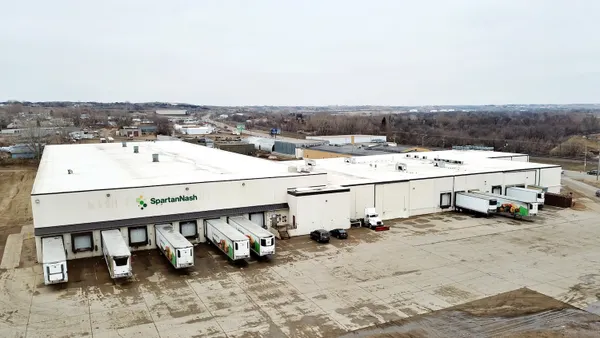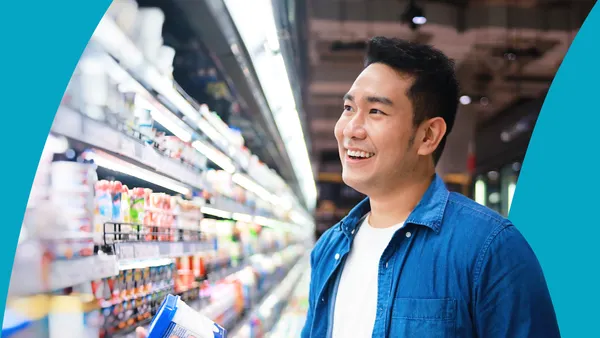Dive Brief:
- Fifty-eight percent of Americans are comfortable using digital tools to assist their grocery shopping, a significant uptick from 2017, when 42% of shoppers said they felt comfortable, according to a report by sales and marketing agency Acosta.
- The report also noted that 89% of American shoppers surveyed, including 93% of shoppers under 40, use a smartphone. More than six in 10 shoppers surveyed said that they use at least one grocery retailer’s app, with many using this tool to shop online and 26% saying they use it to view store circulars. Acosta’s data is from its proprietary U.S. Shopper Surveys conducted between Sept. 25 and Oct. 5, as well as past studies and industry research. The survey's sample size was 732 participants.
- Acosta’s recommendations for grocery retailers looking to optimize shopper activity on their app includes offering individualized store mapping, an integrated grocery list function, and real-time promotion for list items.
Dive Insight:
The use of digital grocery lists, online grocery circulars and digital grocery coupon deliveries has risen steadily in recent years. Since the onset of the pandemic, the use of digital tools has only sped up: Walmart’s grocery app saw a 460% growth in average daily downloads in April compared to January, while Target witnessed a 98% increase in daily downloads in March and April.
According to Acosta, grocers must adapt their systems to reach the growing number of digitally native shoppers. “By delivering an end-to-end approach from mobile recipe/meal planning and list making to e-commerce and an in-store experience that is enhanced by mobile, [retailers] can not only attract more customers, but also engage with them in new and meaningful ways”, said Colin Stewart, executive vice-president of business intelligence at Acosta.
Delivery platforms such as Target-owned Shipt have jumped into digital coupons, for instances when retailers’ online systems don’t integrate coupons into consumers’ orders. There are also investments that grocers can make to their brick-and-mortar locations to prioritize the smartphone user. Acosta recommends checkout innovations that use mobile capabilities, mobile-enabled signage and aisle navigation tools that minimize the need for face-to-face interactions with store staff during the COVID-19 pandemic.
Numerous grocery chains have brought digital-friendly innovations into their stores this year in response to the public health crisis, including mobile payment and scan-and-go programs. Many of these updates have centered on company apps, which have become all-in-one tools that tie together online and in-store shopping. But remaining relevant with shoppers will be a challenge for retailers: According to Acosta's research, the average consumer has around 80 apps on their phone.












